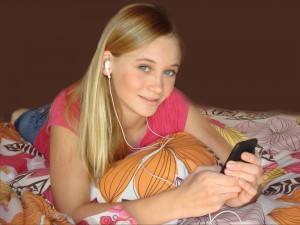A Local Audiologist Speaks Up
A Parent’s Guide to Recognizing and Avoiding Hearing Loss in Children
While you may be aware that our planet is becoming noisier and noisier, are you also aware that the rates of hearing loss in children are increasing as well? These rates reflect both children born with hearing loss and those facing reduced capabilities due to factors in their environment. Approximately 26 million Americans over the age of 20 have noise induced hearing loss or NIHL, an epidemic that could be 100 percent preventable if parents taught their children to take the necessary precautions. In addition, as many as three in 1,000 babies are born with hearing loss that can lead to developmental issues if left untreated. A parent’s vigilance is needed to teach their children how to avoid the causes of hearing loss.
NIHL is brought on by being around loud noises for long periods of time without ear protection. The volume of the noise and the proximity to the source are in direct relationship to the amount of time it will take for hearing to be affected. Loud music at concerts isn’t the only damaging noise that can hurt your child’s hearing. It’s the cumulative effect of every day noises, such as sirens, yard tools, parades, and even earphones that over time can have a negative impact.
Here are some questions that parents should ask their children regarding NIHL:
- Do you ask others to talk louder so you can hear them?
- Does noise hurt your ears?
- Have you developed a buzzing/ringing sound in your ears?
- Do you have difficulty hearing as well as you usually do for several hours after attending a noisy concert?
Parents need to educate children about preventive measures they should use to protect their hearing. Ear protection should become as commonplace as putting on a seat belt in the car. Good habits to adopt include: blocking noise by wearing earplugs, avoiding noise by walking away from the source, or turning down the volume, especially when using earphones. If a parent can hear the music playing over the child’s earphones, it’s too loud! They can also point out good examples of people in the community who always wear ear protection, such as race car drivers, construction workers, or firemen.
Most hearing loss is preventable and treatable, depending on your child’s situation. There are certain cases where hearing loss can also lead to the misdiagnosis of Attention Deficit Hyperactivity Disorder (ADHD), because children aren’t able to hear and process sound normally.
There is one condition in particular that leads to an ADHD misdiagnosis. It’s called Auditory Processing Disorder (APD), and is common in five percent of school-age children. Children with APD do not necessarily have a problem hearing, but they fail to process the information they hear the same way as others due to poor coordination between their brain and auditory system. They often do not recognize subtle differences between sounds in words resulting in difficulty understanding speech clearly. This can lead to speech and language delays and academic problems if not diagnosed and treated properly.
Here are some symptoms to look for if you think APD might be at the root of a suspected hearing problem:
- Do noisy environments upset your child?
- Does your child behave better in quiet environments?
- Does your child have difficulty following directions, whether simple or complicated?
- Are conversations hard for your child to follow?
- Is abstract information difficult for your child to comprehend?
If you think your child suffers from any form of hearing loss you should consult your primary care doctor about testing and treatment options. For more information on hearing loss and other health issues that affect your children, visit Nemours’ KidsHealth.org
Teresa Tracy, Au.D, is a board certified audiologist at Nemours Children’s Clinic and provides services to diagnose and treat children of all ages with hearing loss, auditory processing disorders, and speech problems related to hearing loss.









